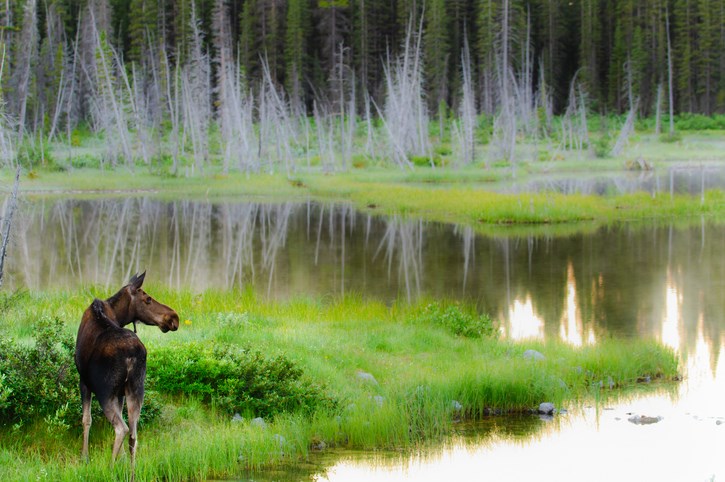THUNDER BAY DISTRICT – A new nature challenge is educating communities about nature with a more hands-on technique.
The Thunder Bay Field Naturalist and the Lakehead Regional Conversation Authority partnered with the Natural History Museum of Los Angeles County, the California Academy of Science, and the Canadian Wildlife Foundation. Earth Care, and Anishnawbe Mushkiki to organize a community science initiative. The Thunder Bay district is invited to participate in the seventh annual City Nature Challenge.
“The city and nature challenge is essentially the world's biggest bio blitz,” explains Gene Kent, Thunder Bay Field Naturalist. “A bio-blitz is an event where people go out and try to identify as many things in nature as possible.”
The challenge begins on Friday, April 29. The global event asks community members of all ages to walk around their communities and take pictures of the natural wildlife, such as plants, animals, fungi, slime mould, scat, fur, tracks, shells, and carcasses. Then upload the pictures to the iNaturalist mobile app, and wait for observation to be identified by experts.
“You get a lot of eyes and ears out looking at the natural world that you may have, you know, a few hundred or few thousand scientists in a bigger city, “said Gene Kent, “but if you get people out in nature. They have incredible power to observe and take observations. All you need to participate in the program is the app iNaturalist, which is a free app. You can get it for Android or IOS and register for a free account. Then you take pictures with your phone, tablet, or camera if you want to use the internet to upload them, and you upload those during the challenge period.”
The app itself is pretty interesting. The app uses artificial intelligence, which scans the uploaded photo and matches the image with known species. However, the diversity found in nature is extensive, and there is a chance the public can discover new species to document for the scientific community.
Several events take place in and around the city if the public wishes to participate.
On April 29, the Lakehead Regional Conservation Authority will have staff at the Cascades from 1 p.m. until 4 p.m. There are to take their observations, but they're there to help the public.
On April 30, from 9 a.m. to 12 p.m., Naturalist and wildlife biologists and the Anishnawbe Mushkiki Youth program will be at Mission Marsh documenting.
The four-day event will conclude Monday, May 2. From there, all the photos will be reviewed by experts from around the globe and in our region, and the results of the experiment will appear on iNaturalist’s project page.
Gene Kent explains, “everybody isn’t an expert scientist. So, you pick your best match, and then scientists and people who love nature in our area around the world can look at it and say, “yep, that's what you saw.” If you get two-thirds of them agree that it counts as a scientific observation, scientists build up their information about what is living in your area, and they may even find endangered or rare species.
Initially, the event started as a challenge between San Francisco and Los Angeles science communities and, in their first year, had a few thousand observations taken between those two cities. But progressing over the last six years, there are 420 cities documenting over 1.2 million observations.
These observations made during the challenge have helped scientists to detect patterns of biodiversity changes on a global and local scale. Some of the previous year’s observations showed a growing threat to giant Australian cuttlefish off the coast of Adelaide, Honduras’s first record of a species of hairstreak butterfly, and an invasive emerald as borer beetle in Denton County, Texas. These insights into the bio-diverse world of nature provide scientists, educators, urban planners, and policymakers with large pools of data to aid in organizing conversation decisions.
When asked about particular conversation efforts that Gene Kent is working on, he said, “there’s been a significant effort in the region and around the city of Thunder Bay over the past decade, or more is to protect the wetlands. They're critical habitats. We have a great deal of biodiversity and a lot of life. In the old days, people saw the wetlands and decided to build on them. But now we know that they're really critical areas like anywhere near a lakeshore. So, all the observations there is help make the case that certain areas are worth protecting. You don't know until you make a lot of observations to see where living things are in your community.
Nature is all around us. One of the best ways to study it is to connect the science community with the local community to grow a better understanding of the biodiversity around our cities, neighbourhood, and homes.
For more information, visit citynaturechallenge.org.
Sign-up is free. Visit inaturalist.org or download iNaturalist from the Apple App Store or the Google Play store.
